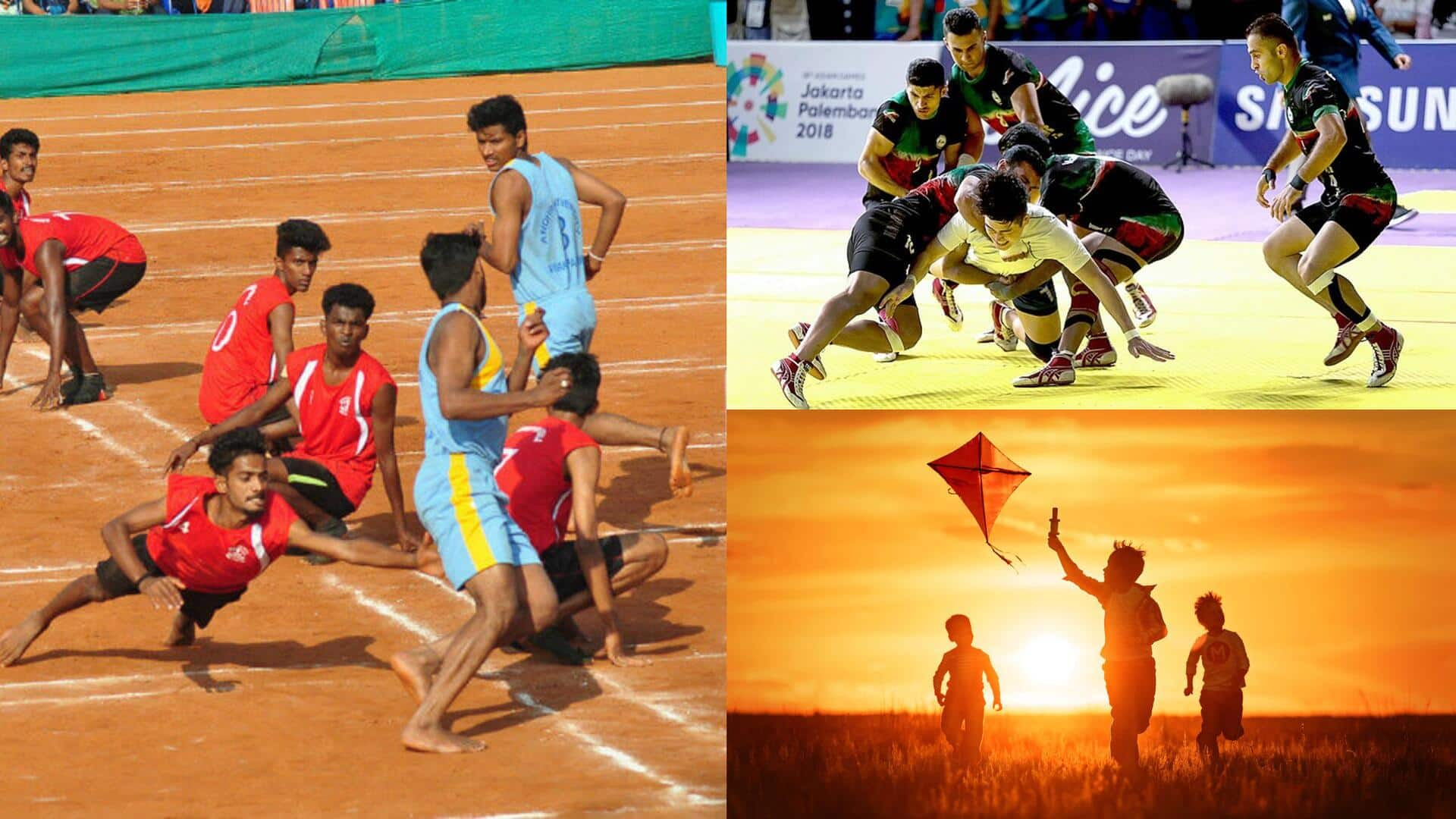
National Sports Day: Traditional Indian sports every GenZer must play
What's the story
In a world dominated by modern sports and technology, traditional Indian sports offer Gen Zers a chance to connect with their cultural heritage. These age-old games, rooted in the history-rich Indian subcontinent, offer more than just physical activity. They serve as portals to India's past, revealing the values, beliefs, and social dynamics of bygone eras. Here are five sports every child today must know.
Hutututu
Kabaddi
Kabaddi, a sport with roots tracing back over 4000 years, is believed to have originated in the southern region of India, specifically in Tamil Nadu during the Vedic period. This game is known by different names in various places, like Hadudu in Bangladesh, Baibalaa in the Maldives, and Hututu in Maharashtra. Unlike most modern sports, it doesn't require any equipment to play.
Kho-kho
Kho-kho
Kho-kho, a well-known traditional Indian sport, originated and evolved in ancient India. The roots of kho-kho can be traced back to at least the fourth century BC, with potential references to its gameplay found in the Mahabharata. Back in the day, a variation called "Rathera" is believed to have been played on chariots. After Kabaddi, it's the most popular tag game in India.
Gilli Danda
Gilli danda
Originating during the time of the Maurya Dynasty 2500 years ago, gilli danda is a classic game that has stood the test of time. The beauty of gilli danda lies in its straightforwardness, involving just a long stick (danda) and a small oval piece of wood (gilli). Some believe that sports like cricket, baseball, and softball might have drawn inspiration from this amateur sport.
Hopscoth
Kith-kith
Kith-kith, a traditional Indian game similar to Hopscotch, has been a favorite among kids for a long time. It's known by different names in various Indian states, like chirpi in Maharashtra, tokkudu billa in Andhra Pradesh and Telangana, ekka dukka in West Bengal, and khane in Kashmir. This game's roots go way back to around 600-500 BCE during the Iron Age in prehistoric India.
Kite flying
Kite flying
Kites are said to have come to India with Buddhist missionaries who traveled through the Silk Route from the East. The earliest records of kites in ancient Indian literature can be found in the writings of a thirteenth-century poet named Namadeva. He called kites "gudi" and mentioned they were made from paper called "kaagad." Kites also find mention in the Ramayana and the Vedas.